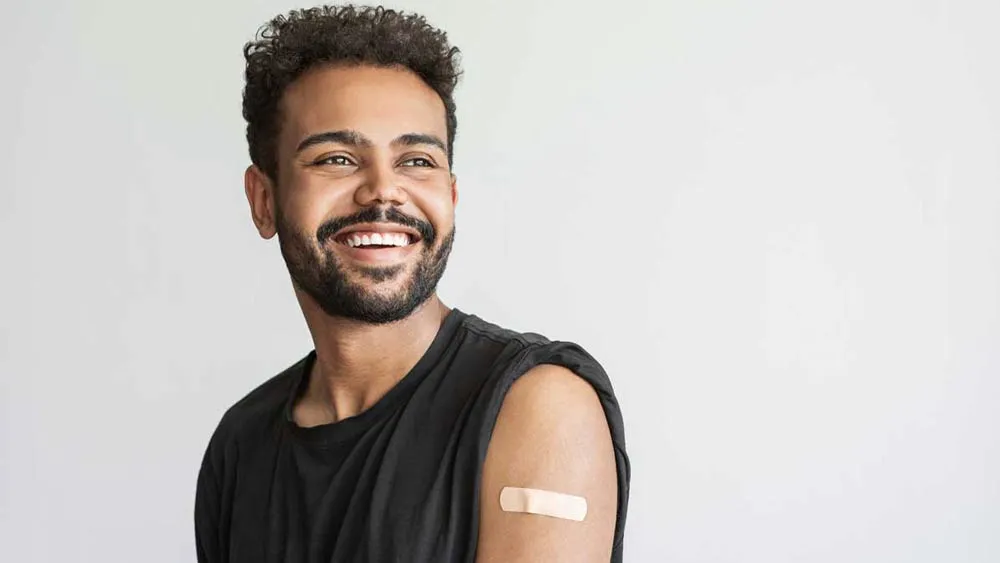July 20, 2016
New Research Marks Important Step Forward to Understand PrEP Use
EDGE READ TIME: 5 MIN.
Several studies presented at the 21st International AIDS Conference (AIDS 2016) in Durban provided new insights on the use of PrEP among a broad range of populations. One study provided new national estimates of PrEP use in the U.S. by geography and other demographics, another found the near elimination of HIV transmission risk among serodiscordant heterosexual couples using both PrEP and antiretroviral treatment, and two additional studies examined PrEP use among adolescents in both southern Africa and the U.S.
"Just as the 2000 International AIDS Conference in Durban ushered in a global movement to bring life-saving HIV treatment to the developing world, I am confident we'll look back at this conference as the dawn of the global PrEP era," said Linda-Gail Bekker, President-elect of the International AIDS Society and Principal Investigator at the Desmond Tutu HIV Centre. "A primary focus of this conference is moving science into practice, and nowhere is that need more urgent than for PrEP."
Research featured in the briefing included:
Increased PrEP use among U.S. adults: A nationally representative study assessing PrEP use in the U.S. found that 49,469 adults received a Truvada prescription for PrEP from January 2013 to December 2015, and that the number of prescriptions increased nationally over time: 3,746 in 2013; 14,756 in 2014; and 30,967 in 2015. Scott McCallister of Gilead Sciences, Inc., the manufacturer of Truvada, presented the study, which included de-identified data from 82 percent of retail pharmacies on adults who received a Truvada prescription. Study results also showed that the four states with the highest number of new HIV cases in the U.S. (California, New York, Texas, and Florida) accounted for 43 percent of PrEP starts. From 2014 to 2015, PrEP starts increased in the South and Northeast, and decreased in the Midwest and West. The vast majority of PrEP prescriptions were for males (87.5 percent), and the mean age was 37.4 years, with 11.5 percent under age 25. Compared to HIV-positive individuals, those receiving PrEP were about three times less likely to be female (95 percent CI 3.0-3.2) and twice as likely to be under age 25 (95 percent CI 1.93-2.05). Despite positive trends in utilization, authors conclude that PrEP use must increase to ensure that lifetime HIV risk decreases in areas of high prevalence in the U.S.
Combination of PrEP and ART leads to near elimination of HIV transmission among serodiscordant couples: Final results from the Partners Demonstration Project, an open-label PrEP and ART delivery study that enrolled treatment-na�ve, high-risk, heterosexual HIV serodiscordant couples from Kenya and Uganda, found that integrated use of PrEP and ART nearly eliminated HIV transmission within these couples. Of 1,013 couples enrolled, 67 percent had an HIV-positive female partner; median age was 29. Among a randomly selected sample of HIV-negative partners receiving PrEP, tenofovir was detected in 82 percent of plasma samples (483/587 visits). Treatment was initiated by 92% of HIV-positive partners by 24 months, and viral suppression (
Closer look at PrEP use among adolescents at risk: Plus Pills is the first southern African open-label study to explore the acceptability, safety, and use of oral PrEP among HIV-negative adolescents (ages 15-19 years). Study participants (n=148; 98 female and 50 male) enrolled in two sites, Cape Town and Soweto. Median age of study participants was 18 and median age at sexual debut was 15. Participants were required to take PrEP daily for the first 12 weeks of the study, but could opt out at the 12-week mark and at each 3-month interval thereafter. At enrollment, participants reported an average of 1.5 weekly sex acts, 30 percent had two or more partners in the past 12 months, 43 percent reported infrequent condom use, and 38 percent tested positive for sexually transmitted infections. Lead author Katherine Gill of the Desmond Tutu HIV Centre discussed the study results, which found no HIV incident infections. At 12 weeks, 72 percent reported good adherence (>6 pills/week) and 76 percent had tenofovir plasma levels (>40 ng/ml). At the 12-week mark, 15 percent of participants chose to opt out. According to study authors, results showed that early adherence was reasonable among a high-risk adolescent population.
A separate open-label study looked at PrEP use among gay and bisexual male adolescents (ages 15-17) in six U.S. cities: While Truvada is not currently licensed for PrEP among individuals under age 18, participants were permitted to autonomously consent to the study. Between August 2013 and September 2014, ATN 113 (Project PrEPare) enrolled 78 individuals (mean age=16.5; 33.3 percent mixed race, 29.5 percent black, 20.5 percent Latino). Sybil Hosek of the Stroger Hospital of Cook County Health and Hospitals System presented the study results. Incident sexually transmitted infections were diagnosed in 12.3 percent of participants at week 24 and 10.6 percent at week 48. The HIV seroconversion rate per 100 person-years was 6.41 (95 percent CI: 4.90-25.87). The majority of participants reported condomless sex throughout the study; no significant associations were found between condomless sex and adherence. While the majority of participants achieved protective drug levels during monthly visits, the study found that adherence decreased with quarterly visits.
For more information, visit http://www.aids2016.org


